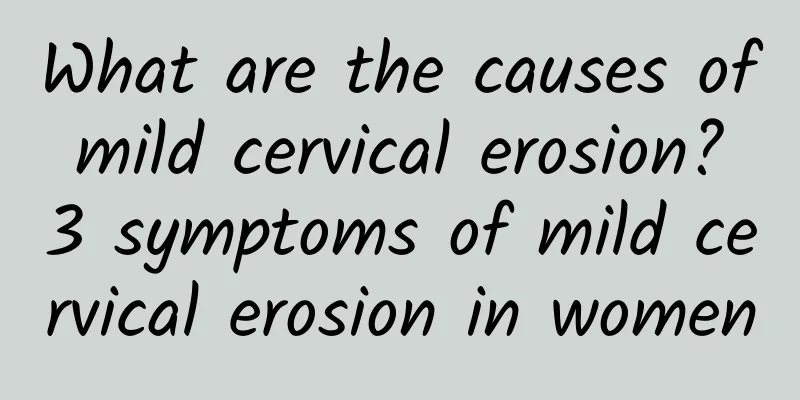Is cervical hypertrophy a precancerous lesion of the cervix?

|
Cervical hypertrophy is not equivalent to cervical precancerous lesions, but it may be related to long-term inflammation, hormone effects and other factors, and regular examinations are needed to rule out the possibility of cervical cancer. Understanding the causes of cervical hypertrophy and scientific countermeasures is the key to preventing the development of cervical diseases. 1. Causes of cervical hypertrophy Cervical hypertrophy is usually caused by long-term chronic cervical inflammation or other factors: - Chronic inflammatory stimulation: Long-term infection of the cervix (such as bacteria, pathogens) may lead to tissue hyperplasia and hypertrophy. Common sources of infection include bacteria, viruses (such as HPV), etc. -Abnormal hormone levels: Abnormal estrogen secretion may lead to excessive proliferation of cervical glands and cervical hypertrophy. It is more common in women during pregnancy, menstrual disorders or menopause. - Traumatic or operational factors: Operations such as childbirth, artificial abortion, and cervical surgery may cause a proliferative reaction of cervical tissue and increase the risk of hypertrophy. -Other pathological factors: Local lesions such as cervical polyps and cysts may also cause cervical hypertrophy. 2. Relationship between cervical hypertrophy and cervical cancer Cervical hypertrophy itself is not a precancerous lesion, but if combined with long-term chronic inflammation or infection with high-risk HPV virus, it may increase the risk of precancerous lesions or cancer. For patients with cervical hypertrophy, regular examinations (such as cervical smear examinations or HVP tests) are particularly important to rule out the possibility of lesions. 3. Treatment and management of cervical hypertrophy -Drug treatment: For simple chronic inflammatory cervical hypertrophy, anti-inflammatory drugs and antibiotics can be used for treatment. The use of antibiotics must be based on the specific type of pathogen, such as cephalosporins for bacterial infections and antiviral interference drugs for viral infections. -Physical therapy: If cervical hypertrophy persists and symptoms are obvious, physical therapy can be used, including laser therapy, cryotherapy or electrocautery, to help repair the cervical tissue structure. -Surgical treatment: For more serious cases accompanied by other cervical lesions, cervical conization or other surgical methods can be used to remove the diseased tissue and prevent the lesions from worsening. 4. Home care and prevention advice -Maintain good hygiene habits and take care of your vulva every day to reduce the chance of infection. - Maintain a regular schedule, avoid staying up late, and enhance immunity to prevent recurrence of inflammation. -Perform gynecological examinations 1-2 times a year, including cervical liquid-based cytology (TCT) and HPV screening, to detect and intervene in potential pathological problems early. Cervical hypertrophy is not a precancerous lesion of cervical cancer, but inflammation or infection may increase the risk of cancer. Women should pay attention to body signals and protect their health through standardized treatment and timely examinations. If symptoms persist or are accompanied by abnormal manifestations, please seek medical attention as soon as possible. |
<<: Symptoms and causes of adnexitis What medicine to take for pelvic inflammatory disease
>>: Causes and prevention of cervical erosion
Recommend
What medicine to take to treat bacterial vaginosis
The key to treating bacterial vaginitis is to use...
What does missed abortion mean?
What does a missed miscarriage mean? A missed mis...
Is it because women have dark private parts that they are "experienced"? Don't be ridiculous! I'll tell you the truth all at once
Some time ago, a patient of mine came to me myste...
What should you pay attention to after curettage? Pay attention to these 4 points
Curettage can cause great damage to the uterus, s...
Swimming is prone to fungal vaginitis
Swimming pools in summer are places where bacteri...
What to use to clean vulva itching
Vulvar itching may be caused by a variety of reas...
How to treat pelvic effusion during pregnancy
The treatment of pelvic effusion during pregnancy...
What causes irregular menstruation? Eating more of these three foods can easily regulate irregular menstruation
As women in the new era, most female friends have...
How many days does it take to recover after uterine fibroid surgery?
How many days does it take to recover after uteri...
How to regulate irregular menstruation after childbirth? Try this to regulate irregular menstruation after childbirth
Many women will encounter such a situation, that ...
What causes pelvic inflammatory disease?
Pelvic inflammatory disease is a common gynecolog...
Does cervical hypertrophy cyst affect pregnancy?
Cervical hypertrophy and cysts may affect pregnan...
Fatty liver disease alert! Essential liver protection for office workers
Office workers who work overtime, often eat out a...
Abnormal black vaginal discharge in women
Abnormal black vaginal discharge may be caused by...
What is the difference between a delayed abortion and a missed abortion?
There is generally no difference between delayed ...









